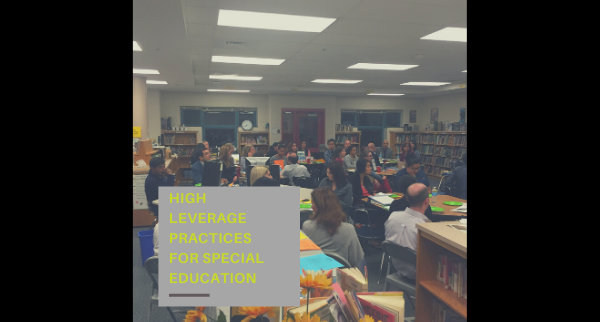High Leverage Practices for Special Education
High leverage practices, or HLPs, are recognized as critical practices that can be implemented deliberately by educators to support student learning in an effort to meet specific learning goals. In order for an instructional practice to be considered a high leverage practice, it must meet certain criteria:
- The strategy must focus on an instructional technique.
- It must be a technique that is used routinely in the classroom.
- It must be a method that is proven to increase student engagement and academic success.
- The practice must be able to be utilized cross-curricularly; it should exemplify a functional approach to teaching and learning, regardless of the content or content area.
This is all technical teacher-speak for a research-based instructional strategy that can be used frequently by teachers in any classroom to achieve specific learning goals. Now, what does this look like in practice for students with special needs? HLPs are typically categorized into four types: collaboration, assessment, social/emotional/behavioral, and instruction.
Collaboration, as it sounds, involves a cooperative effort among a child’s entire educational team, from parents and teachers, to occupational therapists, pediatricians, to cognitive behavioral specialists. Sometimes referred to as “wraparound services,” the goal of collaborative HLPs is to ensure that all members of the child’s support system are on the same page, working towards the same goals. One HLP is to plan, organize, and facilitate routine meetings between support systems. During these meetings, the child’s learning goals are established, evaluated, and revisited as needed. Another aspect of collaborative HLPs involves networking, so to speak. Too often, families can feel lost or overwhelmed by a child’s unique learning needs. Therefore, it is critical that support services, resources, and guidance be provided in a collaborative effort to ensure that each child’s academic needs are met.
HLPs that fall under the assessment category are used to identify and capitalize on a student’s unique strengths. For instance, one practice involves using several various sources of information and data to evaluate a student’s full realm of capabilities and needs—educators cannot simply rely on standardized tests and rote assessments in order to determine a child’s abilities. When it comes to assessments, another HLP involves the use of assessment data as a means for modifying content, reestablishing learning goals, and reteaching. Teachers are not just scoring tests and moving on—we use this data as a checkpoint on the road to student growth.
Social/emotional/behavioral HLPs begin with the idea that consistency and mutual respect are essential to providing a positive and enriching learning environment. Providing children and teens with constructive, positive feedback and opportunities to grow in their social abilities are additional high leverage practices frequently utilized by educators. Finally, behavior support plans and interventions also qualify as high leverage practices. These plans are designed and created in an effort to curb negative behaviors by providing students with positive reinforcement, coping strategies, and alternative methods for working through emotions.
Instructional HLPs encompass a vast array of strategies and techniques that many teachers simply deem “best practices.” One involves short and long-term goal-setting, an HLP that helps to prioritize a student’s learning needs by aligning ability level to grade level-specific benchmarks. Adapting and/or modifying learning materials within the curriculum is another beneficial practice—this is usually accomplished with the help of the special education team and with a student’s IEP or 504 accommodations in mind. Repeated, explicit instructions in multiple forms, including written and verbal, are also instructional HLPs that help to ensure students know what they are expected to do—and how to do it.
In part two, we will share specific instructional techniques that fall under the category of HLPs. In addition to using these in the classroom, we will provide tips and tricks for how to utilize these educational methods at home for virtual learning.




